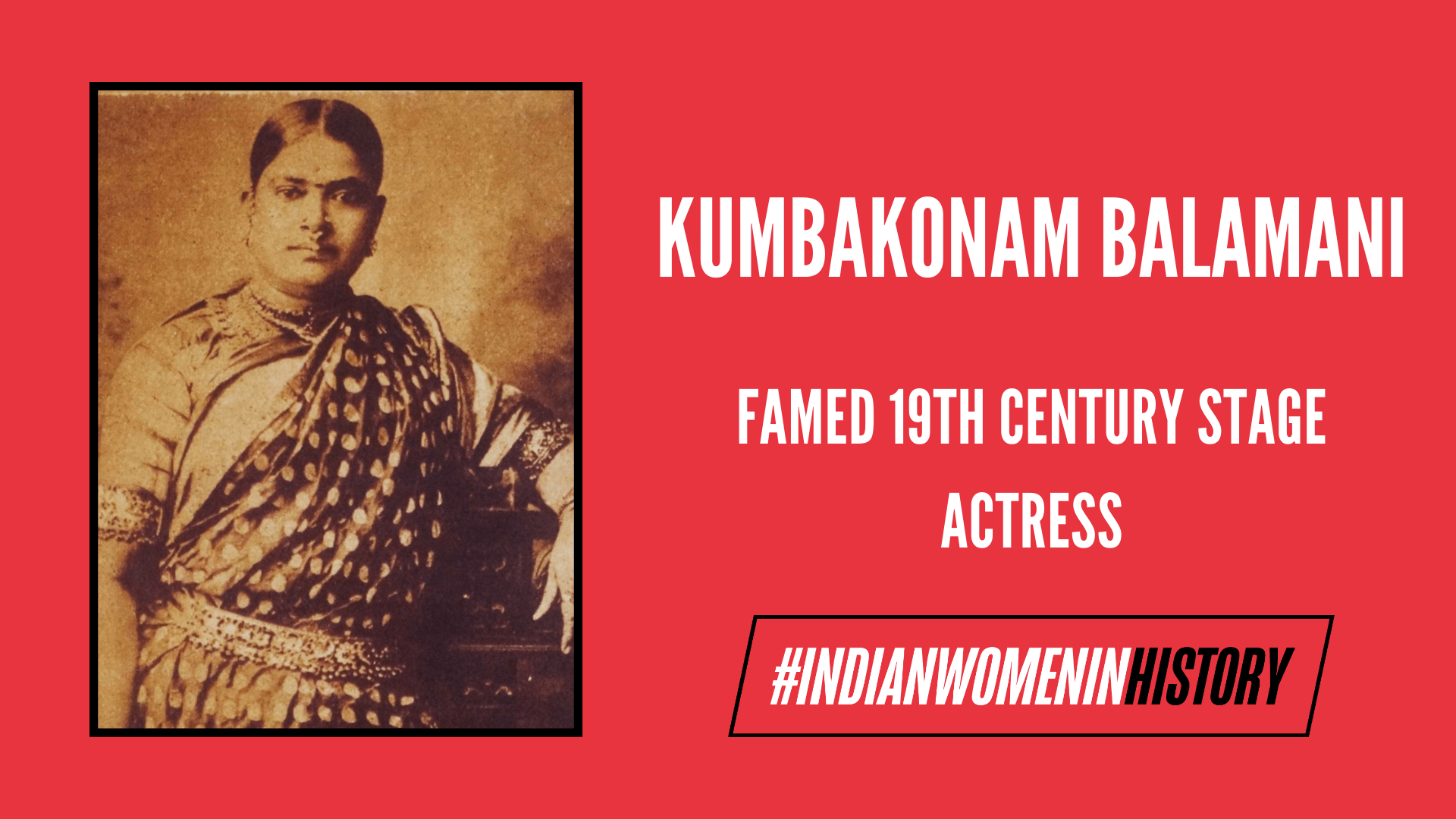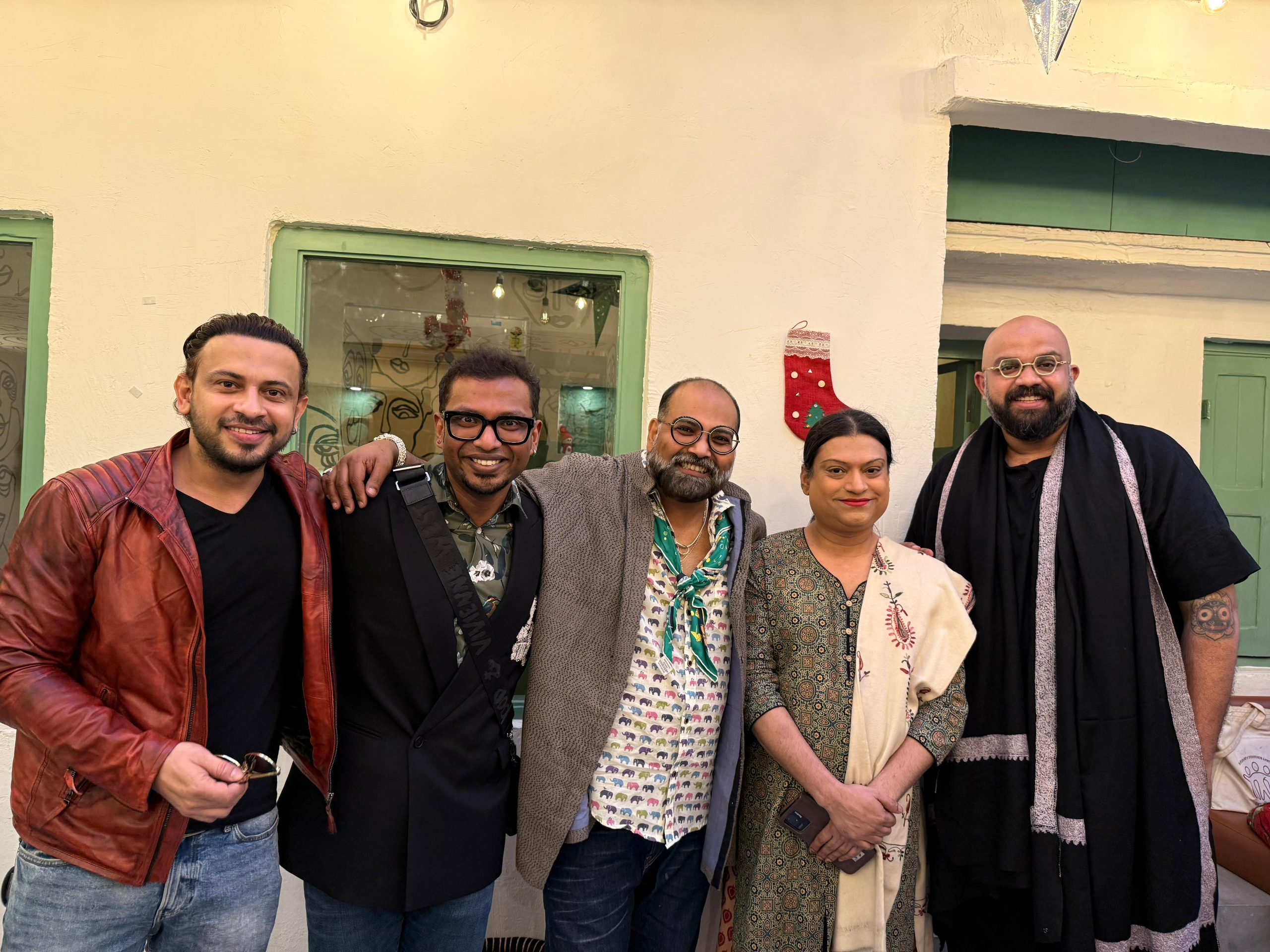The story of Kumbakonam Balamani (or Balamani of Kumbakonam) is one that has been forgotten, nay, intentionally destroyed; the perpetrator of which we will get back to shortly.
Born into the status of Devadasis (literal translation: female servants of God, artists or dancers who were supposedly married to God, later degraded to a status of harlots) and inherited with art that she wished to share with the common world, Kumbakonam Balamani broke out from the temple and established one of the first formal enterprises in India: The Balamani Drama Company. Though she is not the only one to run a company that employed women, her company stands apart even today as she set the tradition of exclusively hiring destitute women. Kumbakonam Balamani’s company, it has been noted, was in fact “almost an asylum for women who needed shelter and security”.
Born into the status of Devadasis (literal translation: female servants of God, artists or dancers who were supposedly married to God, later degraded to a status of harlots) and inherited with art that she wished to share with the common world, Kumbakonam Balamani broke out from the temple and established one of the first formal enterprises in India: The Balamani Drama Company.
Also read: TP Rajalakshmi — The Renaissance Woman Of Tamil Cinema | #IndianWomenInHistory
Ambitious and elegant, Kumbakonam Balamani spurred sensational crowds to her shows in the late 19th century. These were crowds who were ecstatic after bearing witness to not merely her beauty, but the astounding artwork that her plays were. Her fame grew so much in the 1900s that the State organised two special trains, named ‘Balamani Special Express’, to carry the thousands of her fans across the land to watch her plays at Kumbakonam. This limelight had made Kumbakonam Balamani one of the wealthiest single-earning women in history. She rode a silver chariot to her shows and owned a mansion with about 50 domestic workers (all, of course, rehabilitated women).

What then, happened to this stage star? Why is it that Kumbakonam Balamani’s name is unknown today, even in the remote south where she had strived to enliven the whole of ancient Sanskrit plays?
While the exact dates of Balamani’s birth and death remain unknown, the earliest mention of her life of success and consequent strife is recorded by the French novelist and traveller, Julien Viaud (who wrote under the pen name Pierre Loti) in his 1903 book titled, In the Land of the Great Palms.
Balamani put her wealth to essential use: she patronised the building of temples, indulged in charity and married off young women with extravagant dowries (traditionally seen as meant for the upkeep and maintenance of the brides) under her own expense. As Pierre Loti recorded, in her heyday, “The poor know the road to her house well enough”.
This very charity, however, turned its back against her. Her property and wealth eroded, and eventually in 1935, Kumbakonam Balamani, the tremendously influential businesswoman, a patron of the arts and an individual of singular personality, was laid to rest after her final days being those of extreme poverty. It is said that it took an old, loyal associate to collect money from well-wishers to pay for her final rites.
The tragedy of Kumbakonam Balamani’s story unfortunately does not end with her demise. The injustice seeps through the blatant efforts made to erase her influence from art and theatre, an enraging attempt made by the Brahmanical society to antagonise a woman who challenged norms.
Also read: Thathri Kutty: The Woman Who Challenged Brahminism Through Her Sexuality | #IndianWomenInHistory
In the play Tara Shashankam, where Tara, played by Balamani had to appear nude before her lover Chandra (Shashank) to express her loyalty to him, Balamani is said to have undertaken the role authentically by either appearing topless behind a translucent screen or clad in clothes that made her body look bare. While the play was a staggering hit with the masses, it unsettled the upper-caste tier of (male) artists where dialogues of censorship now began.
A decade following Kumbakonam Balamani’s death, a resolution was passed under Parthasarathy Iyengar, banning one of her plays claiming it to be immoral — a word that came to be synonymous to anything that went against the comforts of a now largely Brahminised culture of theatre.
A decade following Kumbakonam Balamani’s death, a resolution was passed under Parthasarathy Iyengar, banning one of her plays claiming it to be immoral — a word that came to be synonymous to anything that went against the comforts of a now largely Brahminised culture of theatre. The resolution also intended to ‘clean’ the art of theatre, ‘salvage’ it from the hands of devadasis and entrust it into the ‘safe sanitised hands’ of other upper-caste communities.
The stigma of being a Devadasi or a ‘dancing girl’, along with the unsolicited scandalous gaze that came with being a successful woman unfortunately managed to outshine what Kumbakonam Balamani really had come to represent: a remarkable challenge to the heteropatriarchy.

Quoting Veejay Sai, the first and arguably the only one to find Kumbakonam Balamani’s traces scattered across records and surface her story in his book Drama Queens: Women who Created History on Stage: “Her memory continues to linger in the jingle of anklets, in the many silent gestures registered in the reflections of green room mirrors and in the side-wings and curtains on stage, wherever a play is performed. She was truly the first celebrated superstar of the Tamil stage.”
About the author(s)
Vyshnevi Divya Satheesh is a ‘queer’ious teen grappling onto the little good left in the world, still unlearning heteropatriarchy and whistling through life with an undying love for literature, music and chaya. She can be found on Tumblr, Instagram and can be reached on her email: vyshnevi.sat@gmail.com




